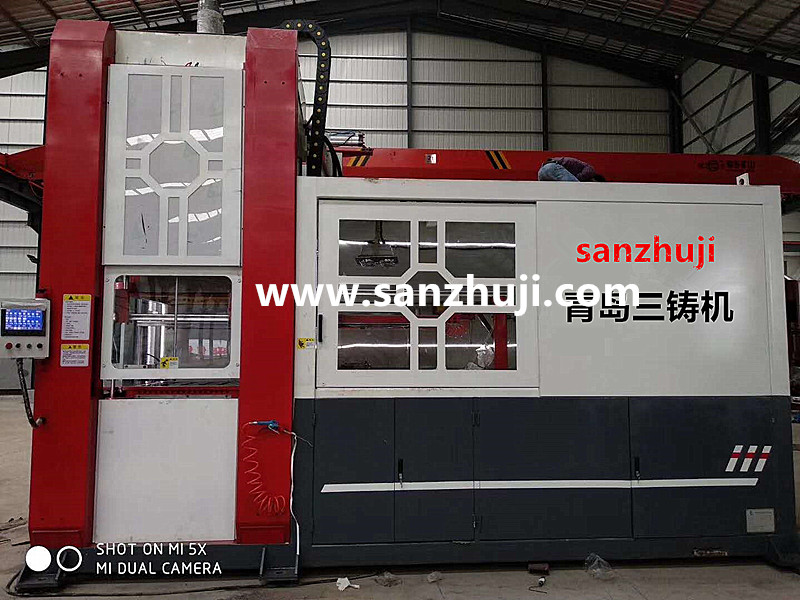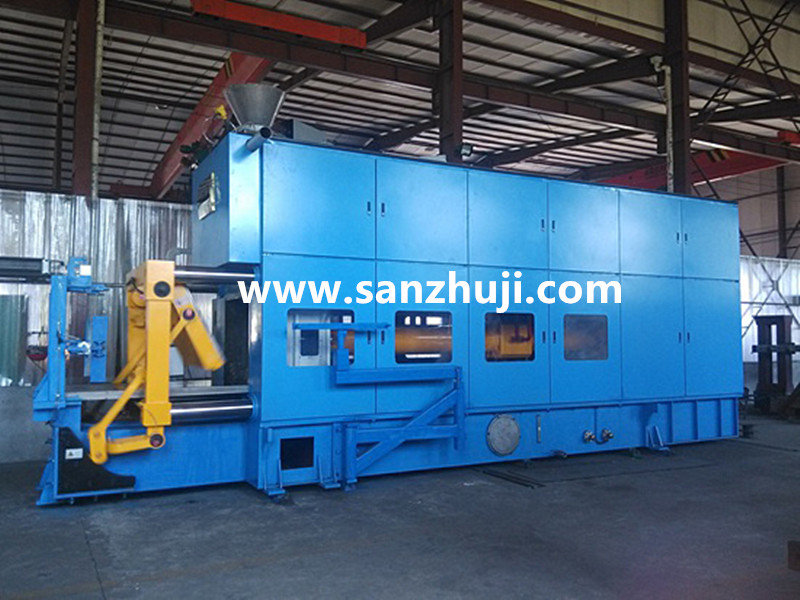1、sanzhuji combined with resin clad sand casting characteristics, the entire sand casting analysis. (Resin clad sand belongs to organic binder type, core sand)
1.1.resin clad sand characteristics: with suitable strength properties; good fluidity, made of sand, sand core outline clear, dense organization, able to create a complex sand core; sand (core) surface quality is good, surface roughness up to Ra = 6.3 ~ 12.5μm, size accuracy up to CT7 ~ CT9 level; collapse good, easy to clean up the casting.
1.2.scope of application: the overlay sand can be made both casting and sand core, overlay sand type or core can be used with each other and with other sand type (core); not only can be used for metal gravity casting or low pressure casting, can also be used for iron overlay sand casting, can also be used for hot centrifugal casting; not only can be used for cast iron, non-ferrous alloy castings production, can also be used for the production of cast steel parts.
2、Preparation of resin-coated sand
2.1. Clad sand composition, generally composed of refractory materials, binder, curing agent, lubricant and special additives.
2.11 refractory material is the main body of the composition of the laminated sand. The requirements for refractory materials are: high refractoriness, less volatiles, more rounded particles, solid, etc. Generally choose natural scrubbing silica sand. The requirements for silica sand are: high SiO2 content (cast iron and non-ferrous alloy castings require greater than 90%, cast steel parts require greater than 97%); mud content of not more than 0.3% (for scrubbing sand) - [the mud content of washed sand is specified as less than; particle size distribution on the adjacent 3 to 5 sieve number; particle shape rounded, angular factor should not be greater than 1.3; acid consumption value of not less than 5ml.
2.12 The binder is commonly used phenolic resin.
2.13 curing agent usually adopts urotropine; lubricant generally adopts calcium stearate, whose role is to prevent the cladding sand caking and increase the fluidity. The main role of the additive is to improve the performance of the laminated sand.
2.14 laminated sand basic ratio components, the original sand 100 scrub sand, phenolic resin 1.0 ~ 3.0 accounted for the original sand weight, urotropine (aqueous solution) 10 ~ 15 accounted for resin weight, calcium stearate 5 ~ 7 accounted for resin weight, additives 0.1 ~ 0.5 accounted for the original sand weight. (1:2) 10~15 accounts for the resin weight, calcium stearate 5~7 accounts for the resin weight, additives 0.1~0.5 accounts for the original sand weight .
2.2.Production process of laminated sand
The preparation process of laminated sand mainly has cold lamination, warm lamination, thermal lamination three, the current production of laminated sand is almost all using the thermal lamination method. The thermal laminating process is to heat the raw sand to a certain temperature, then mix with resin, aqueous solution of urotropine and calcium stearate respectively, and make it by cooling and crushing and sieving. The mixing process differs due to the difference of recipe. At present, there are many kinds of domestic laminated sand production lines, manual feeding of semi-automatic production lines of about 2000 ~ 2300, computer-controlled automatic production lines have also been nearly 50, effectively improving the production efficiency and product stability. For example, the automatic visual production line of xx Foundry Co., Ltd. has precise control of charging time to 0.1 second and heating temperature control to 1/10℃, and can observe the state of sand mixing through video at all times, and the production efficiency reaches 6 tons per hour.
3、The main product types of laminated sand
3.1.Ordinary clad sand is the traditional clad sand, its composition usually consists of quartz sand, thermoplastic phenolic resin, urotropine and calcium stearate, without additives, its resin addition is usually relatively high under certain strength requirements, does not have high temperature resistance, low expansion, low gassing and other characteristics, applicable to the production of castings with low requirements.
3.2.High-strength low-gas-emitting type of cladding sand, characteristics: high strength, low expansion, low-gas-emitting, slow-gas-emitting, anti-oxidation Introduction: High-strength low-gas-emitting cladding sand is a new generation of ordinary cladding sand, by adding the relevant characteristics of "additives" and using a new formulation process, so that the resin dosage is significantly reduced, its strength than ordinary cladding sand The strength of the sand is more than 30% higher than that of ordinary clad sand, and the amount of gassing is significantly reduced and the speed of gassing can be slowed down, which can better adapt to the needs of casting production. This type of coating sand is mainly used in cast iron parts, small and medium-sized cast steel, alloy cast steel parts production. At present, there are three series of this type of coating sand: GD-1 high-strength low-gas-emitting coating sand; GD-2 high-strength low-expansion low-gas-emitting coating sand; GD-3 high-strength low-expansion low-gas-emitting antioxidant coating.
3.3.high temperature resistant (class) cladding sand (ND type), characteristics: high temperature resistance, high strength, low expansion, low outgassing, slow outgassing, easy to collapse, anti-oxidation Introduction: high temperature resistant cladding sand is a new type of cladding sand with excellent high temperature performance (high strength at high temperature, long heat resistance, low thermal expansion, low outgassing) and comprehensive casting performance produced by special process formulation technology. This type of clad sand is especially suitable for the production of complex thin-walled precision cast iron parts (such as automobile engine block, cylinder head, etc.) and highly demanding cast steel parts (such as container angle and train brake retardation; medium vessel shell parts, etc.), which can effectively eliminate casting defects such as sand sticking, deformation, thermal cracking and porosity. At present, there are four series of this clad sand: VND-1 high temperature resistant clad sand. ND-2 high temperature resistant low expansion and low outgassing cladding sand ND-3 high temperature resistant low expansion and low outgassing antioxidant cladding sand ND-4 high temperature resistant high strength bottom low expansion and low outgassing cladding sand
3.4.Easy to collapse class of cladding sand, with good strength, while having excellent low temperature collapse performance, suitable for the production of non-ferrous metal castings.
3.5.other special requirements cladding sand, in order to meet the needs of different products, developed a series of special cladding sand such as: centrifugal casting with cladding sand, cooling cladding sand, wet state cladding sand, anti-adhesive sand, anti-vein pattern, anti-orange peel cladding sand, etc.
Qingdao Sanzhuji Equipment Manufacturing Co., Ltd. specializes in the production of sand reclamation equipment,foundry machines,Sand casting equipment,GS high efficiency rotary mixer,no-bake resin sand mixer,Jolt squeeze molding machine/Jolt-squeezing moulding machines,Multi- Piston Moulding Machine/Hydraulic multi-piston moulding machine,foundry molding machine,flaskless moulding machine,shot blasting machine,dust collector,according to the amount of old sand recovered Carry out plan customization, and provide sand reclamation equipment installation, commissioning, and training. Welcome guests to visit the factory.








